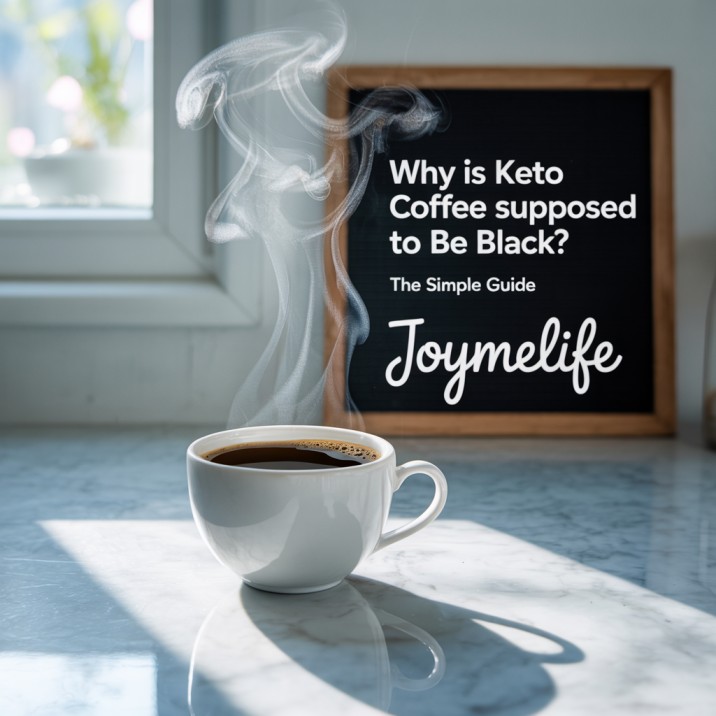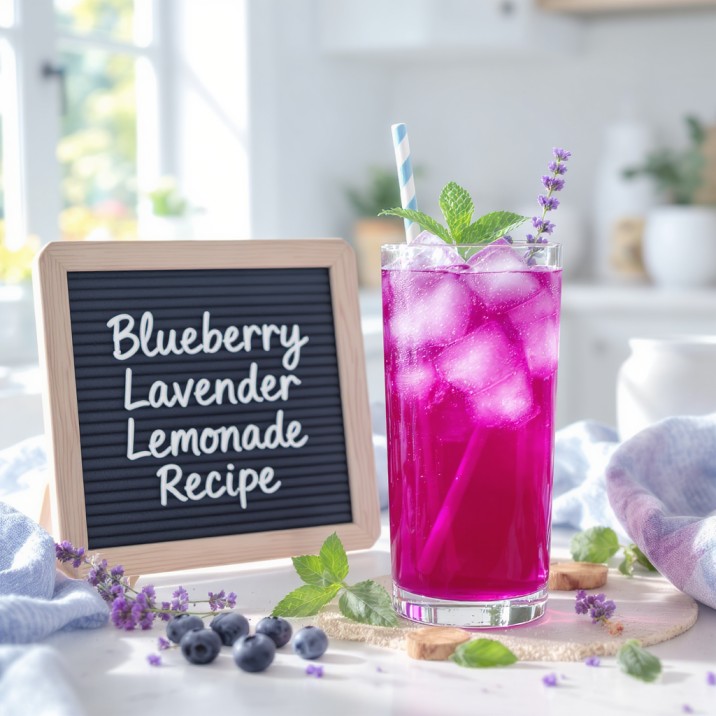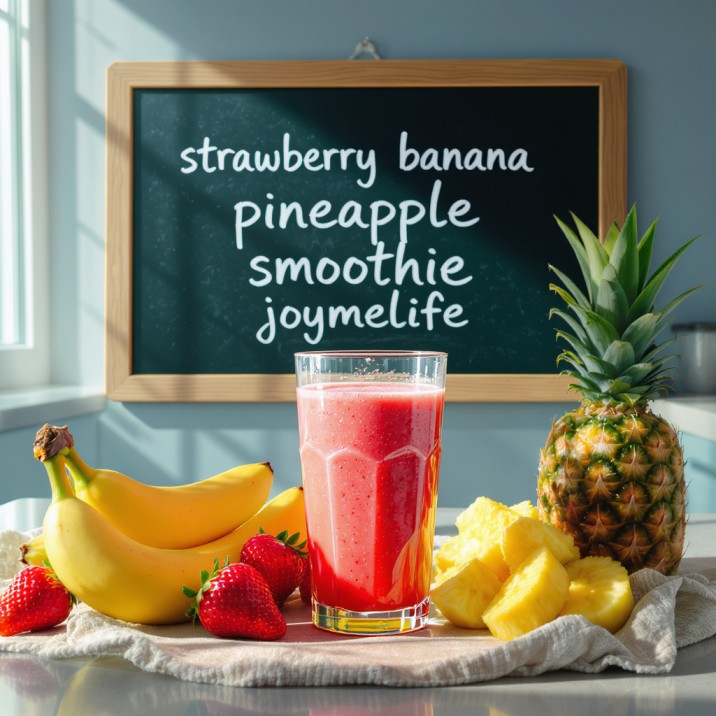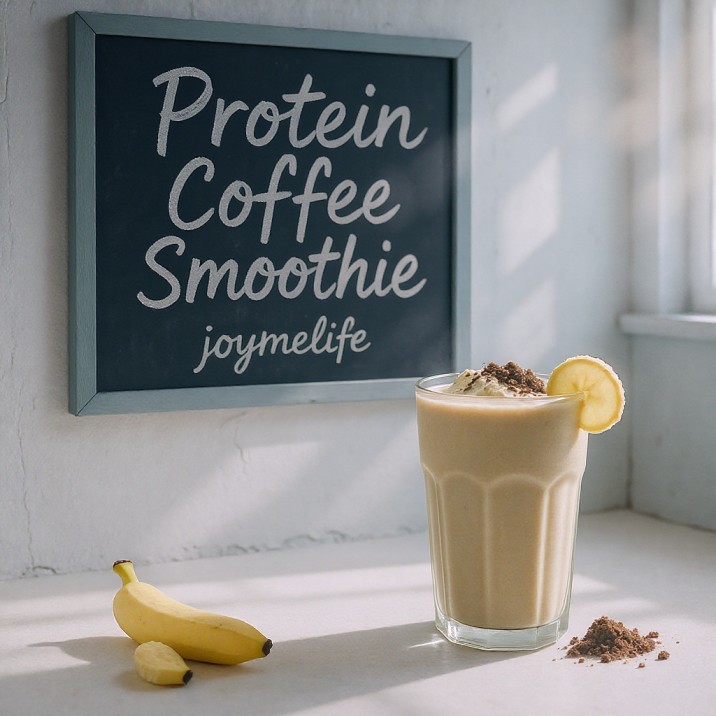Why is Keto Coffee Supposed to Be Black? Debunking the Myth & Simplifying Your Brew

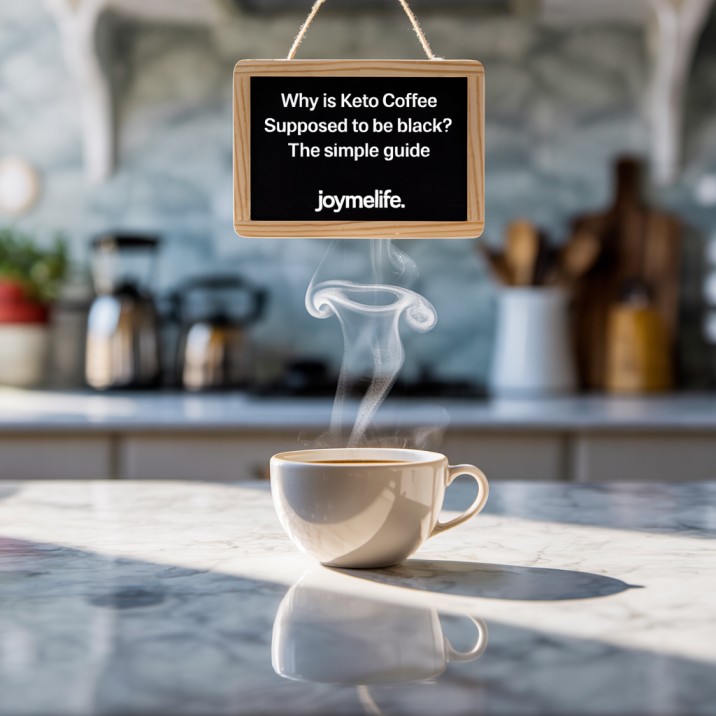
Hello, keto voyagers and coffee lovers! If you’ve ever started on the ketogenic diet and found yourself staring into a cup of black coffee wondering, “Why is keto coffee supposed to be black?” – and if you can possibly survive without your creamy, sweet morning brew – then this guide is for you. It’s one of the most common points of confusion and a major hurdle for many people starting their keto journey. We’re here to simplify the rules, bust the myths, and show you how to enjoy a delicious, satisfying cup of coffee that fits perfectly into your low-carb lifestyle. For more simple guides to a healthier, more joyful you, be sure to explore the resources at joymelife.
The fear of being stuck with plain black coffee forever is real, but we’re here today to solve that problem. Let’s break down why this misconception exists and, more importantly, what you can put in your coffee to keep it both keto-friendly and delicious.
The Big Keto Coffee Myth: Does It Really Have to Be Black?
Let’s get right to the heart of the matter and answer the question that brought you here.
The Short Answer: No! (And Why This is Great News for Coffee Lovers)
No, your coffee does not have to be black on the keto diet. You can breathe a sigh of relief! While plain black coffee is indeed 100% keto-friendly, it is not your only option. The ketogenic diet is all about keeping your carbohydrate intake very low so your body can enter a state of ketosis (burning fat for fuel instead of glucose). The key is to choose add-ins that are high in fat and very low in carbs and sugar. Luckily, there are plenty of delicious options that fit the bill.
So, Where Does the “Black Coffee Only” Idea Come From?
The “keto coffee must be black” idea is a classic case of oversimplification. It comes from a place of caution, because the things people traditionally add to their coffee are the exact opposite of keto-friendly. Think about it:
- Sugar: Pure carbohydrates.
- Milk: Contains lactose, which is a milk sugar.
- Sweetened Creamers: Loaded with sugar, corn syrup, and unhealthy oils.
Since all these common additions are forbidden on keto, the simplest, safest advice for a beginner is often, “Just drink it black.” This prevents accidental carb consumption that could kick you out of ketosis. But this advice misses the wonderful world of keto-friendly additions.
Why Plain Black Coffee is the “Default” Keto-Friendly Drink
To understand what we can add, it helps to understand why black coffee gets the green light in the first place.
The Simple Reason: Zero Carbs, Zero Sugar, Zero Problem
Plain black coffee – whether it’s drip, pour-over, French press, or an Americano – is the perfect keto beverage because it contains virtually zero calories, zero fat, zero protein, and most importantly, zero carbohydrates. You can drink it freely without impacting your blood sugar or your state of ketosis. It’s the clean, simple, default starting point.
How Traditional Coffee Add-ins Can Derail Ketosis (The Real Villains)
Let’s look at why your old coffee habits might not work on keto. A typical “regular coffee” with two creams and two sugars can easily contain 15-25 grams of carbs. Even a standard latte made with whole milk can have 15+ grams of carbs from the milk sugar (lactose) alone.
- Sugar (1 tsp): ~4 grams of carbs
- Whole Milk (1 cup / ~240ml): ~12 grams of carbs
- Sweetened French Vanilla Creamer (1 tbsp): ~5 grams of carbs (mostly sugar)
When your daily carb limit on keto is typically between 20-50 grams, you can see how a single traditional coffee could use up most of your daily allowance. This is why the “just drink it black” advice started – it’s a foolproof way to avoid these carb-heavy additions. But now, let’s get to the fun part: the solutions.
Beyond Black: How to Actually Enjoy Your Coffee on Keto (The Problem-Solving Guide)
If you don’t enjoy black coffee, you are not destined for a caffeine-free life. Here’s how to build a delicious keto coffee that works for you.
The Golden Rule of Keto Coffee: Add Fats & Flavor, Not Carbs
The guiding principle is simple. Instead of adding sugar and sugary milk, you’ll be adding healthy fats and sugar-free flavors. Fats are your friend on the keto diet – they provide energy, promote satiety (helping you feel full), and do not spike insulin levels.
Your Ultimate List of Keto-Friendly Coffee Add-ins
Here is your cheat sheet for building a better, tastier keto coffee:
- Heavy Cream or Heavy Whipping Cream: Low in carbs, high in fat, and makes coffee incredibly rich and creamy.
- Grass-Fed Butter or Ghee: A key ingredient in “Bulletproof Coffee.” Adds healthy fats and a velvety texture.
- MCT Oil or Coconut Oil: MCTs (Medium-Chain Triglycerides) are easily converted into ketones by the body, providing a quick source of energy. Start with a small amount to avoid digestive upset.
- Unsweetened Nut Milks: Almond milk, coconut milk (from a carton), and macadamia milk are all very low in carbs and great for adding volume.
- Keto-Friendly Sweeteners: Erythritol, monk fruit, and stevia are the most popular choices.
- Sugar-Free Syrups: Many brands offer sugar-free versions of popular flavors like vanilla, caramel, and hazelnut (sweetened with keto-friendly sweeteners).
- Spices: Cinnamon, nutmeg, and cardamom add flavor without any carbs.
- Unsweetened Cocoa Powder or Cacao Powder: For a mocha-like flavor.
- Collagen Peptides (Unflavored): Adds protein for skin, hair, and joint health without affecting the taste.
Decoding “Bulletproof Coffee”: Is This the ONLY Keto Coffee?
You’ve probably heard the term “Bulletproof Coffee” used interchangeably with “keto coffee,” which adds to the confusion. Let’s clear this up.
What Exactly is Bulletproof Coffee? (The Butter & Oil Blend Explained)
Bulletproof Coffee is a specific, branded recipe that has become synonymous with the high-fat coffee trend. The official recipe consists of:
- Upgraded™ Coffee Beans (low-toxin beans sold by the brand)
- Brain Octane Oil (their brand of MCT oil)
- Grass-fed Ghee or Butter
These ingredients are blended together (not stirred) to create a creamy, frothy, latte-like drink. While many people create their own version using generic grass-fed butter and MCT oil, this high-fat combination is what defines “Bulletproof-style” coffee.
The “Why” Behind It: Satiety, Energy, and Ketones
The purpose of Bulletproof coffee is threefold:
- Satiety: The high amount of fat is very filling and can help keep you satisfied for hours, often replacing breakfast.
- Energy: The MCT oil is a rapid source of clean energy for the brain and body.
- Ketone Production: The fats, especially MCTs, encourage your body to produce ketones, helping you get into or stay in ketosis.
The Verdict: Do You Need to Drink Bulletproof Coffee on Keto?
Absolutely not. Bulletproof coffee is just one type of keto coffee. It’s a tool, not a requirement. Many people thrive on keto without ever putting butter or oil in their coffee. You can achieve the same goals – staying in ketosis and feeling great – by simply having a regular coffee with a splash of heavy cream, or even drinking it black. It all depends on your personal goals, taste preferences, and caloric needs.
Your Keto Coffee Creamer & Sweetener Guide (Our “Recipe Variations” Adaptation)
Let’s solve the two biggest problems for people who dislike black coffee: what to use for creamer and what to use for sweetener.
Problem Solved: The Best Keto-Friendly Milks and Creams
- Heavy Whipping Cream: The #1 choice. A tablespoon has less than 1 gram of carbs and lots of satisfying fat.
- Half-and-Half: Use in moderation. It has more carbs than heavy cream but less than milk. A tablespoon or two is usually fine.
- Unsweetened Almond Milk: Very low in carbs (~1g per cup), but not very creamy. Good for an Iced Americano with a splash.
- Unsweetened Coconut Milk (from a carton): Also very low-carb and adds a hint of coconut flavor.
- Keto-Specific Creamers: Many brands now make liquid and powdered creamers using MCT oil, coconut milk powder, and keto-friendly sweeteners. Just be sure to read the labels for hidden sugars or unwanted ingredients.
Problem Solved: Safe Sweeteners That Won’t Kick You Out of Ketosis
- Erythritol (e.g., Swerve): A sugar alcohol that has a minimal effect on blood sugar. Tastes very similar to sugar but can have a cooling sensation for some.
- Monk Fruit: A natural, zero-calorie sweetener derived from a fruit. Often blended with erythritol to balance the taste. It has no aftertaste for most people.
- Stevia: A plant-derived, zero-calorie sweetener. It’s very potent, so a little goes a long way. Some people detect a slightly bitter aftertaste.
- Allulose: A newer “rare sugar” that tastes very much like sugar but is not metabolized by the body and doesn’t raise blood sugar.
Expert Tips and Tricks: Navigating Keto Coffee at Home and at Cafes
Let’s make your keto coffee journey as easy as possible.
How to Order Keto Coffee at Starbucks or Your Local Coffee Shop Without the Stress
Ordering at a cafe can be intimidating. Here are some simple, foolproof orders:
- Simple & Creamy: “I’ll have a grande brewed coffee with a splash of heavy cream.”
- Flavored: “Can I get a tall Americano with two pumps of sugar-free vanilla syrup and a little heavy cream?”
- Iced: “I’d like a venti iced coffee, no classic syrup, with a splash of heavy cream and two packets of stevia.”
- The Key: Always specify “no classic syrup” or “unsweetened” for iced drinks, and be clear about using “heavy cream” instead of milk. Avoid lattes and cappuccinos, as they are mostly milk.
Tips for a Better, More Enjoyable Home-Brewed Keto Coffee
- Blend Your Fats: If you’re adding butter or coconut/MCT oil, you must blend it. Stirring will result in an oil slick on top. Use a countertop blender or an immersion (stick) blender for 20-30 seconds to emulsify the fats and create a creamy, latte-like texture.
- Start Slow with MCT Oil: MCT oil can cause digestive distress if you’re not used to it. Start with just one teaspoon and work your way up over a week or two.
- Bloom Your Spices: If adding cinnamon or cocoa powder, try mixing them into a paste with a splash of your hot coffee first before adding the rest. This helps them dissolve without clumping.
A Quick Note on Fasting: Does “Keto Coffee” Break a Fast?
This is a common and important question. The answer depends on your goals for fasting.
- Strict Fasting (for autophagy, gut rest): Yes, any calories will break this type of fast. In this case, only plain black coffee or plain tea is acceptable.
- Fasting for Ketosis/Weight Loss: This is more flexible. Many people on keto practice “fat fasting,” where they consume only fat (like in a Bulletproof coffee) during their fasting window. The fat does not spike insulin, so it keeps the body in a fat-burning state and helps with satiety, making it easier to prolong the fast.
- The Simple Rule: If it has calories (butter, cream, oil, collagen), it technically breaks a fast. If your goal is strictly zero-calorie fasting, stick to black.

Coffee FAQs: Your Keto Coffee Questions, Simplified
Q1: Can I just use my regular coffee creamer on keto?
A: Almost certainly not. Most regular coffee creamers (like Coffee-Mate or International Delight) list sugar and corn syrup as their primary ingredients, making them very high in carbs and unsuitable for a keto diet. Always check the label, but purpose-made keto creamers or simple heavy cream are your best bets.
Q2: How many cups of keto coffee can I have a day?
A: This depends on the type. You can have several cups of black coffee or coffee with a small splash of heavy cream. However, if you are drinking high-calorie Bulletproof-style coffee with lots of butter and oil, it’s typically recommended to have just one in the morning as a meal replacement, as the calories can add up quickly.
Q3: Will adding fat to my coffee make me gain weight?
A: Not necessarily. On a ketogenic diet, fat is your primary fuel source. Adding fat to your coffee can help you feel full, reduce cravings, and meet your daily fat macros. However, calories still matter. If you add hundreds of calories from fat to your coffee in addition to your regular meals, it could lead to weight gain. It’s best used to replace the calories you would have eaten from a carb-heavy breakfast.
Q4: What’s the easiest way to start making keto coffee if I hate black coffee?
A: Start simple! Brew your favorite coffee and simply add one or two tablespoons of heavy whipping cream. It adds creaminess and a touch of sweetness without any complicated steps. If you want it sweeter, add a few drops of liquid stevia or a packet of monk fruit/erythritol sweetener. This is an easy, delicious entry point.
Q5: Do I have to use MCT oil?
A: No, you do not. MCT oil is a popular keto supplement for its quick energy benefits, but it is completely optional. Many people enjoy keto coffee with just butter, heavy cream, or other healthy fats without ever using MCT oil.
Final Thoughts: Enjoying Keto Coffee Your Way (The Simple Takeaway)
So, why is keto coffee supposed to be black? The simple answer is: it isn’t! That’s just the safest starting point to avoid the high-carb sugar and milk that are traditionally added to coffee.
The real principle of keto coffee is not about restriction but about smart substitution. You’re simply swapping out high-carb additions for delicious, satisfying, high-fat ones. Your coffee doesn’t have to be a boring, black chore. It can be a creamy, rich, and flavorful ritual that supports your health goals, provides steady energy, and keeps you happily in ketosis. Whether you choose a simple coffee with cream, a blended Bulletproof-style powerhouse, or something in between, you now have the knowledge to do it right. For more helpful tips on making your wellness journey enjoyable, remember to check out https://joymelife.com/.
Embrace the fats, ditch the sugar, and create a keto coffee that you truly love to drink every day.
What’s your favorite way to make keto coffee? Do you have a go-to creamer or sweetener? Share your tips in the comments below!
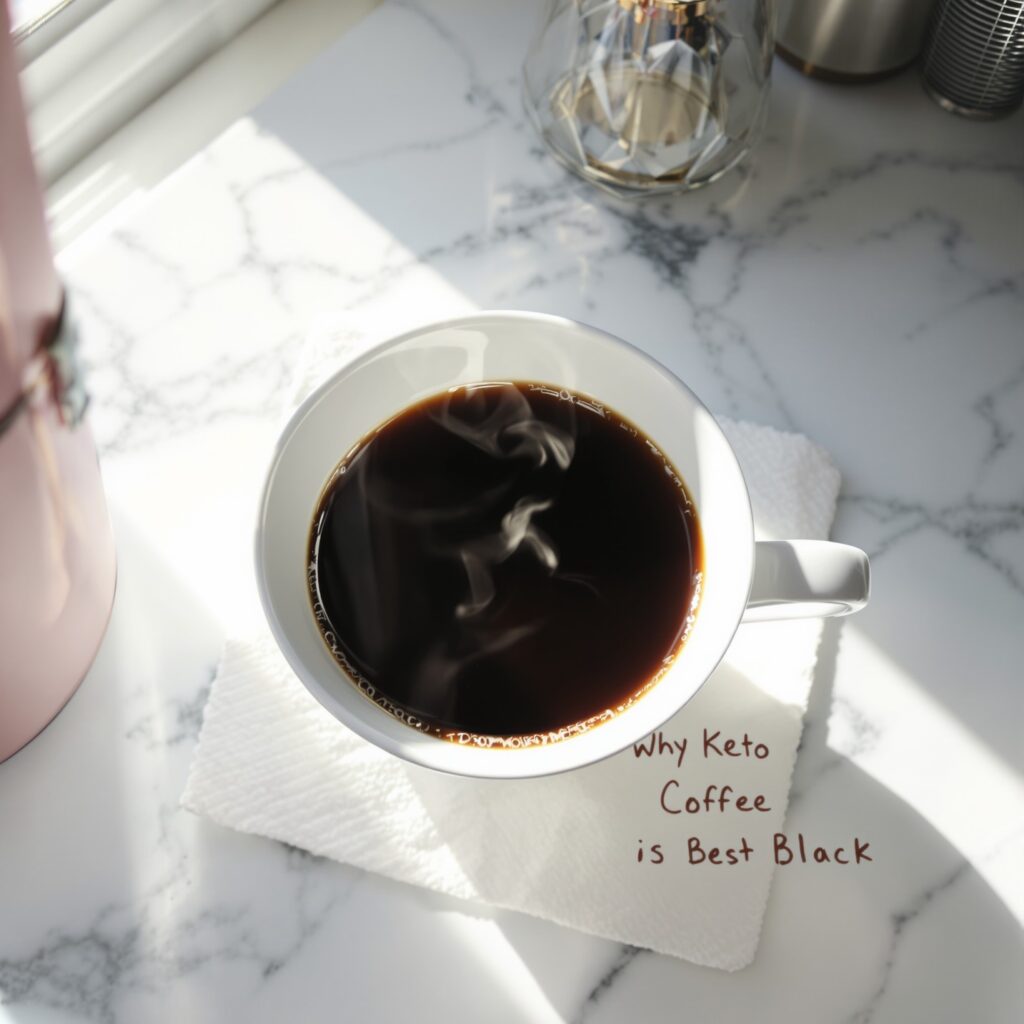
Article Summary & Key Takeaways
The Myth: Keto coffee must be black.The Truth: Keto coffee does not have to be black. It just has to be low-carb. The “black coffee” idea is a simple way to avoid high-carb milk and sugar.
What You CAN Add to Keto Coffee:
- Fats: Heavy cream, grass-fed butter/ghee, MCT oil, coconut oil.
- Low-Carb Milks: Unsweetened almond milk, coconut milk, etc.
- Keto Sweeteners: Stevia, monk fruit, erythritol.
- Flavor: Sugar-free syrups, cocoa powder, spices (cinnamon, nutmeg), collagen peptides.
What to AVOID:
- Sugar and sugary syrups.
- Regular Milk (contains lactose, a sugar).
- Traditional Sweetened Creamers.
Key Takeaway: You can create a delicious, creamy, and/or sweet coffee on keto. The “problem” isn’t coffee itself, but what’s traditionally added to it. You can enjoy your coffee your way by swapping those ingredients for keto-friendly fats and sweeteners.
Remember to check out our other amazing recipes and lifestyle tips at joymelife! Your journey to a joyful life starts here. Thanks for reading!

